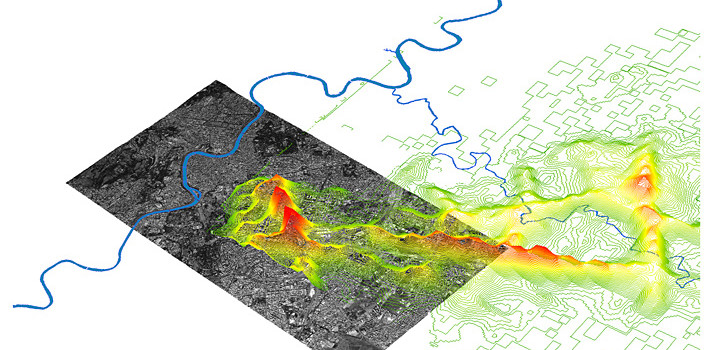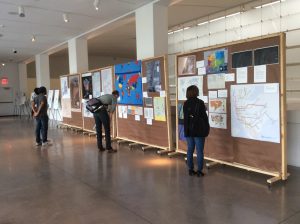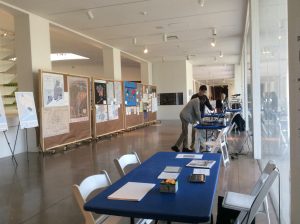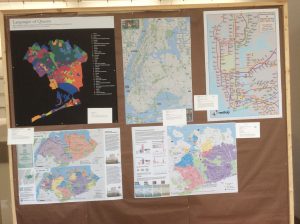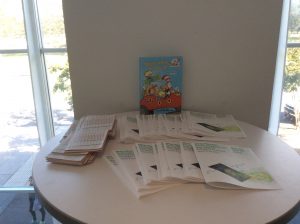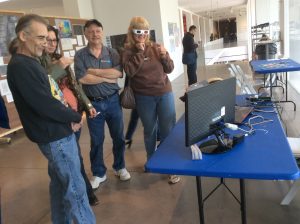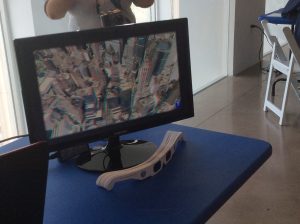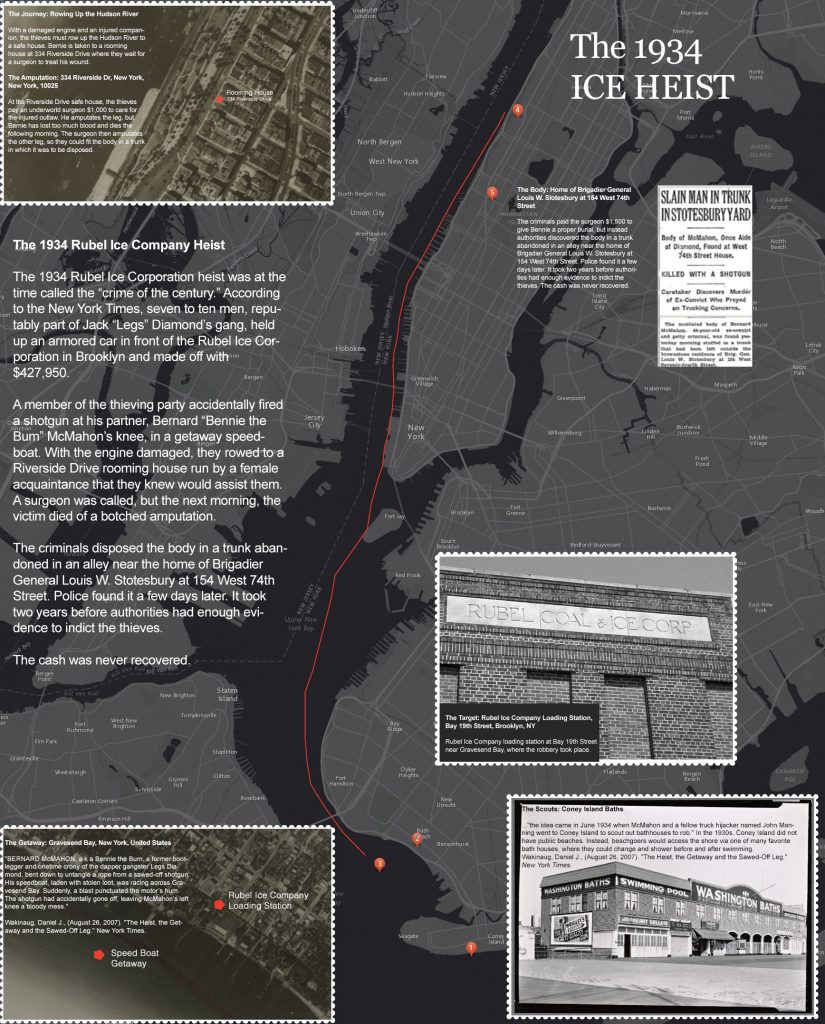Imagine if the most graphic and expressive artifacts from one of the most historic events in New York City lay rolled in tubes in a dusty corner. What if millions of bytes of geographic data, produced through an unprecedented, community collaboration, were dispersed, disconnected and hidden from public view? If you had the opportunity to preserve them, how would you do it?
During the September 11, 2001 rescue and recovery operations, I volunteered to help recruit geographers through a NYC-based GIS user group, called GISMO. The need was critical and overwhelming. The Mayor’s Office of Emergency Management had been evacuated and no longer had access to maps and data necessary for the rescue effort, and if that wasn’t bad enough, they lacked the number of skilled hands to produce the hundreds of maps per day required by the unprecedented event. At this point, GISMO had been working for years to advocate for data sharing and cooperation among city, state, non-profit and private entities, and developed into a 400 strong social network. Hundreds of volunteers, many from GISMO, stepped forward. This effort served as a highly regarded, if anomalous, model for unified response in years to come. But the artifacts from this effort have not been preserved in any curatorial sense. I’d like to change that.
I recently participated in the NYC GeoSymposium 2001-2011-2021, which took a look at the advances and challenges of Geographic Information Systems in emergency response since 2001. Around this time I had been thinking very hard about my career goals and ways to combine my past experience in research and design with the grassroots efforts of the geographic community. I had been working with colleagues at GISMO for many years to draw attention to the important role geographers played in the 9/11 rescue and recovery. The GeoSymposium was a great experience, because it intended not just to honor those who participated in these efforts, but also to highlight the need to preserve the thousands of maps that tell the story.
My own contribution to the GeoSymposium was to explore the legacy of these efforts by examining the technological improvements at the Office of Emergency Management in the context of emergency events that had occurred since 2001. I was looking for a way to present time-based information in a map format and also to start a conversation with attendees about the history of emergency response technology and the importance of the preservation of geographic artifacts. My project contained a map of New York City with events plotted and color-coded by discrete periods, characterized by a common group of new technologies. An online version of the map is available at ArgGIS Explorer Online.
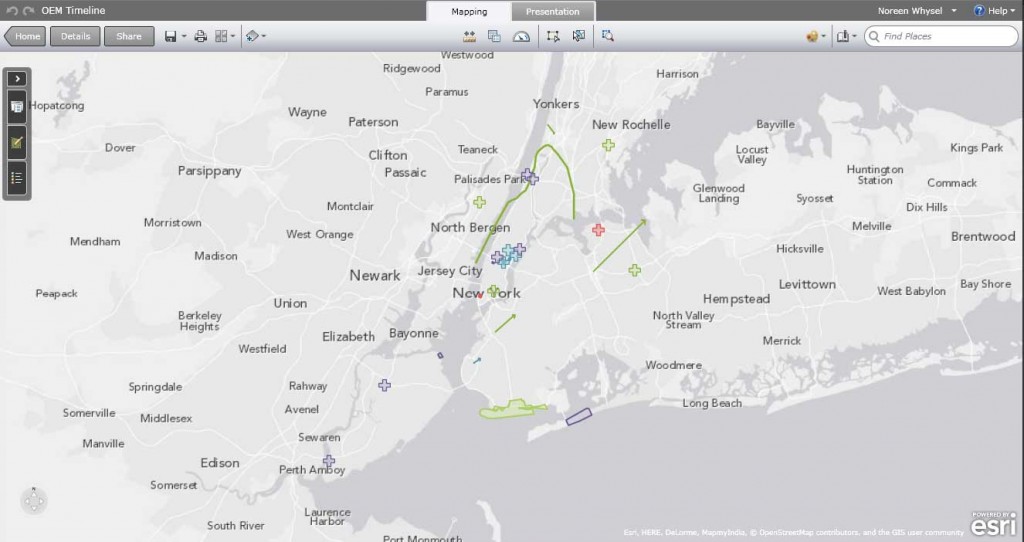
View Interactive Map
OEM Incident Map – Poster
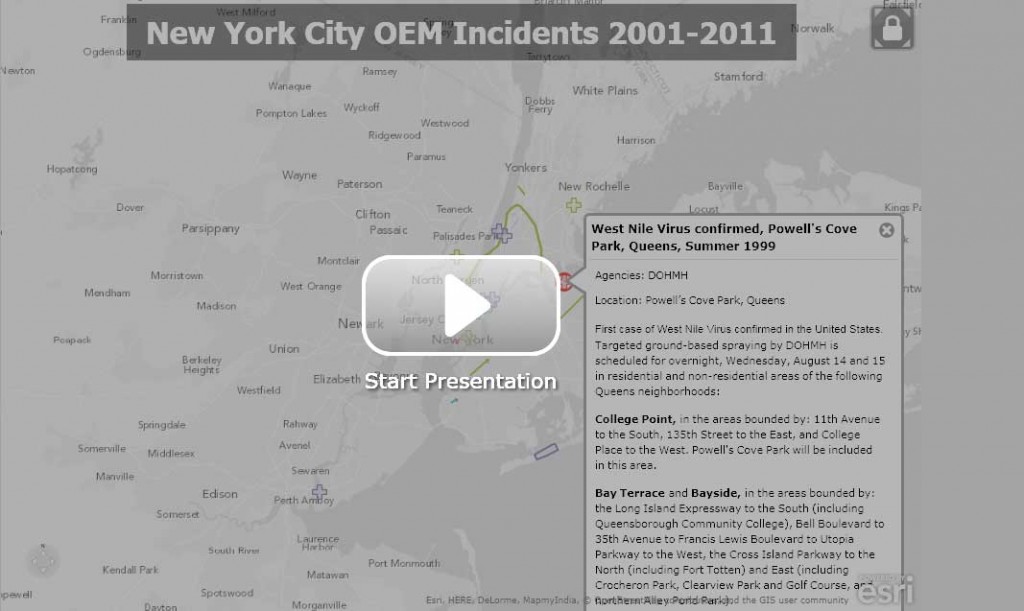 View Detail Slides (Requires Microsoft Silverlight)
View Detail Slides (Requires Microsoft Silverlight)
The map highlights how the events surrounding 9/11 prompted improvements in incident management technology. Attendees, including the keynote presenter and eminent information designer, Edward Tufte, gathered around to discuss their experience with the events I had mapped and to offer advice on ways to enrich its design. (Some of Mr. Tufte’s comments led to further improvements which you can see via the links above.)
Simply talking about how to improve the map was an exercise in exploring history and memory: how people understand what happened, how events are related to one another, how what you choose to include and what not to include can influence a person’s understanding of the events, how the description of one event can bring to mind another similar one, etc. It was thrilling to observe the spontaneous conversation that started all because of a three by four foot piece of foamboard.
And that’s just one artifact. In the aftermath of 9/11, hundreds of maps were produced – Every Day – for months. The 9/11 geographic effort represented a level of cooperation not seen before or since, but whose legacy, coupled with improvements in technology platforms themselves, informs the open data initiatives we are now seeing throughout the U.S.
Of course, the artifacts of the 9/11 response have historical value by themselves. And that is where the images of dusty, neglected rolls of paper come in (even though most of the maps are on disks and hard drives). Several of my GISMO colleagues and I are exploring a plan to create a 9/11 Geographic Archive, featuring the maps that were produced during the rescue and recovery effort. I plan to present an outline of the 9/11 Geographic Archive and my map of emergency response technologies at the ASIS&T Information Architecture Summit in March 2012. Such an archive would be an important contribution to the history of emergency response in this country.
I have always loved presenting information in meaningful and digestible ways, whether through maps, market research reports, drawings, websites or online resource libraries and intranets. From very early in my career, I have been driven to present information in a coherent way and to seek out tools and processes that make coming to understanding easier. I am thrilled by the convergence that today’s state of technology allows between geographic tools and the digital storytelling of the user experience discipline. What is really great about this project is that I will be able to combine aspects of two fields that I love into an end product that would have meaning for many now and in years to come.
So, if you had the opportunity to preserve artifacts from an important event in New York City history, how would you do it? Some of the groundwork has already begun. I have been working with a mentor to explore relationships with organizations that support technology projects in the digital humanities, and with museums and libraries that share an interest in geographic artifacts and 9/11. I am building on my relationships with the City’s amazing geographic community through GISMO, the thirty Geosymposium presenters who told the 9/11 story and senior staff at the Office of Emergency Management and other consultants who have expressed interest in an archive. (I have even applied to an information science program where I hope to explore this project further). Finally and perhaps most importantly, I have the support of members of the GISMO Steering Committee to pursue further resources and trainings to develop the framework for an archive entity. With that grounding, I can turn the question “How would you do it?” into “When can I start?”

